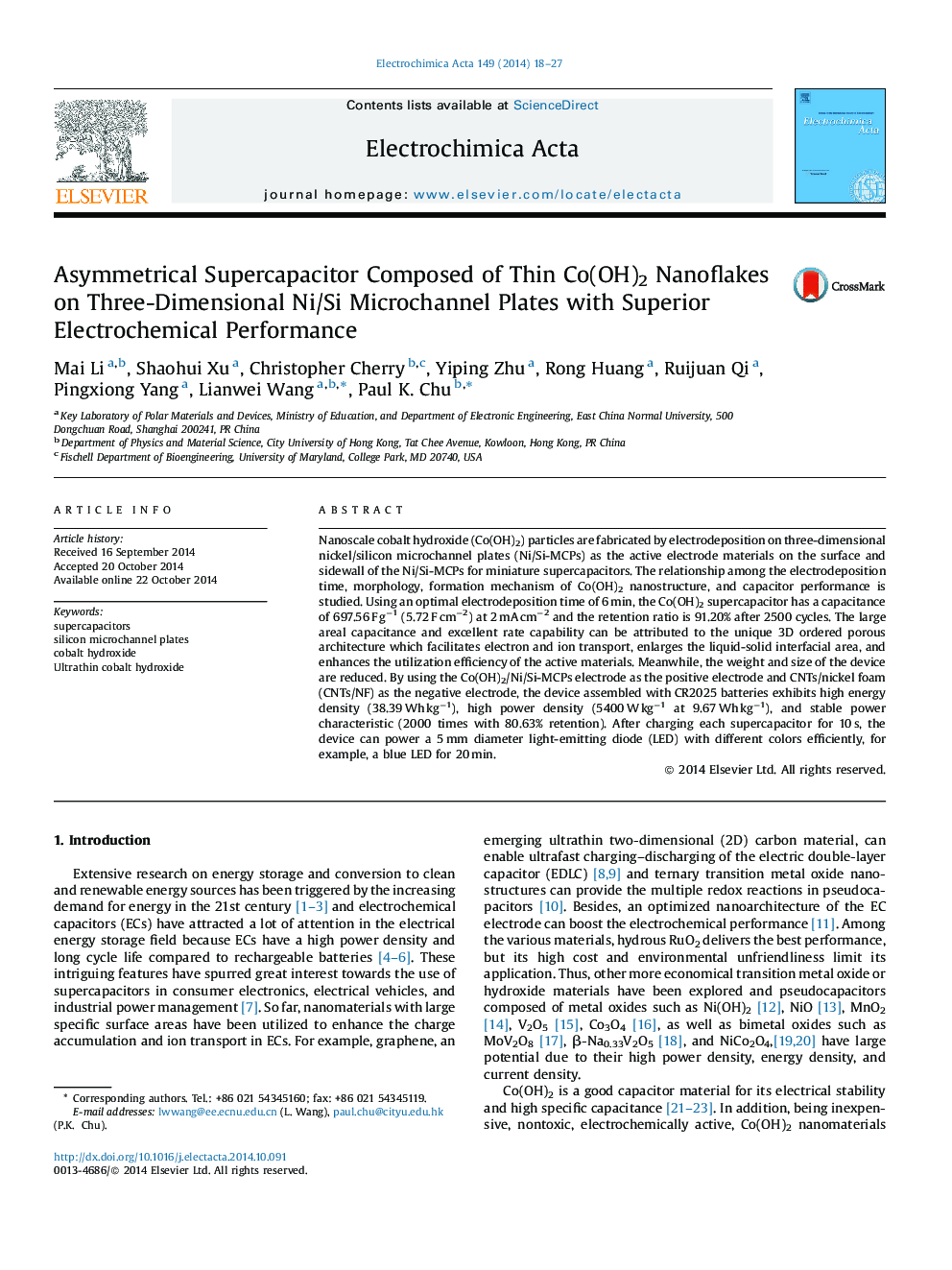| Article ID | Journal | Published Year | Pages | File Type |
|---|---|---|---|---|
| 184931 | Electrochimica Acta | 2014 | 10 Pages |
Nanoscale cobalt hydroxide (Co(OH)2) particles are fabricated by electrodeposition on three-dimensional nickel/silicon microchannel plates (Ni/Si-MCPs) as the active electrode materials on the surface and sidewall of the Ni/Si-MCPs for miniature supercapacitors. The relationship among the electrodeposition time, morphology, formation mechanism of Co(OH)2 nanostructure, and capacitor performance is studied. Using an optimal electrodeposition time of 6 min, the Co(OH)2 supercapacitor has a capacitance of 697.56 F g−1 (5.72 F cm−2) at 2 mA cm−2 and the retention ratio is 91.20% after 2500 cycles. The large areal capacitance and excellent rate capability can be attributed to the unique 3D ordered porous architecture which facilitates electron and ion transport, enlarges the liquid-solid interfacial area, and enhances the utilization efficiency of the active materials. Meanwhile, the weight and size of the device are reduced. By using the Co(OH)2/Ni/Si-MCPs electrode as the positive electrode and CNTs/nickel foam (CNTs/NF) as the negative electrode, the device assembled with CR2025 batteries exhibits high energy density (38.39 Wh kg−1), high power density (5400 W kg−1 at 9.67 Wh kg−1), and stable power characteristic (2000 times with 80.63% retention). After charging each supercapacitor for 10 s, the device can power a 5 mm diameter light-emitting diode (LED) with different colors efficiently, for example, a blue LED for 20 min.
Graphical abstractThe paper studied the formation mechanism and growth process of nanostructured Co(OH)2. The first step of Co(OH)2 growth involves nucleation of nanorods and tiny nanowires and the second is interconnection growth based on those nanostructures. By using the Co(OH)2/Ni/Si-MCPs electrode as the positive electrode and CNTs/nickel foam (CNTs/NF) as the negative electrode, the device assembled with CR2025 batteries exhibits high energy density (38.39 Wh kg−1), high power density (5400 W kg−1 at 9.67 Wh kg−1), and stable power characteristic (2000 times with 80.63% retention). After charging each supercapacitor for 10 s, the device can power a 5 mm diameter light-emitting diode (LED) with different colors efficiently, for example, a blue LED for 20 min.Figure optionsDownload full-size imageDownload as PowerPoint slide
